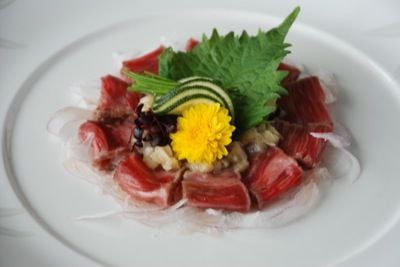A guide to the best beef-producing regions in Japan
Whenever premium beef is mentioned, most gourmands would cite Kobe wagyu beef from Japan as the best. And while it is undoubtedly the most popular and well-known, a number of different regions in Japan produce delicious and distinctive types of beef, too. Asia Tatler Dining takes a look at some of the best beef-producing regions and where to sample some of these delicacies in Hong Kong.
Japanese cows are said to live an emperor's life, which is why they produce the fattest and most succulent flesh in the world. Every cattle farmer in Japan has his own method of indulging their cows, from secret blends of soybeans, tofu byproduct or sake mash in the feed; mineral water to drink; and daily walks and supposed beer massages to encourage fat distribution. Some even play classical music to relax the animals, while making sure they receive plenty of time in the sun.
In addition, every region has a different terroir or uses a different breed of animal so much like a wine connoisseur will have a preference for a Burgundy over a Bordeaux, true beef-lovers are also able to differentiate and appreciate beef from different prefectures.

Kobe beef is the most famous outside of Japan, and it refers to meat from the black Tajima-ushi breed of cattle, raised in the Hyogo prefecture. To qualify as Kobe beef, the meat must come from a bullock or castrated bull for purity reasons, slaughtered at designated slaughterhouses in the prefecture, and the rules is that each animal can only produce 470kg of meat or less. Most importantly for meat lovers, the marbling ratio of Kobe beef must have a Beef Marbling Standard (BMS) of six or above (out of a score of 12). Thanks to its high fat ratio, beef from Kobe is often said to have a consistency that is more like foie gras than steak.
Read more about foie gras here.
Matsuzaka beef is more popular in Japan than internationally, the prime difference between Matsuzaka (from Mie prefecture) and Kobe beef is that the meat from Matsuzaka comes from female cows only, while Kobe meat comes from bullock or bulls. Whether it is that or because these heifers are not slaughtered until they are three years old (most other cattle is killed at two years or younger), beef connoisseurs say that Matsuzaka beef has a more complex and developed flavour, compared to beef from Kobe. Only 25,000 cows are killed a year, making the meat both rare and expensive. Most chefs handle Matsuzaka beef with care, either serving it raw as sushi, sashimi or tataki; and rarely cooking it aggressively on high heat.





